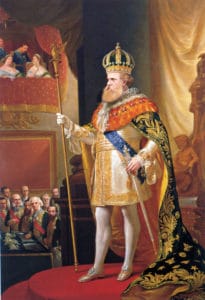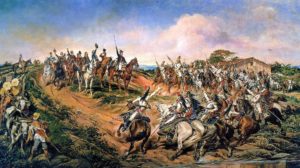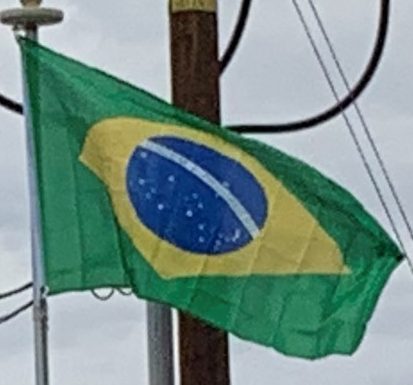The Brazilian War of Independence, which had already begun along this process, spread through northern, northeastern regions and in Cisplatina province. The last Portuguese soldiers surrendered on 8 March 1824; Portugal officially recognized Brazil on 29 August 1825.
On 7 April 1831, worn down by years of administrative turmoil and political dissent with both liberal and conservative sides of politics, including an attempt of republican secession, and un-reconciled to the way that absolutists in Portugal had given in the succession of King John VI, Pedro I went to Portugal to reclaim his daughter’s crown, abdicating the Brazilian throne in favor of his five-year-old son and heir (who thus became the Empire’s second monarch, with the royal title of Dom Pedro II).
Pedro II, Emperor of Brazil Between 1831 and 1889:
As the new Emperor could not exert his constitutional powers until he became of age, a regency was set up by the National Assembly. In the absence of a charismatic figure who could represent a moderate face of power, during this period a series of localized rebellions took place, such as the Cabanagem in Grão-Pará Province, the Malê Revolt in Salvador da Bahia, the Balaiada (Maranhão), the Sabinada (Bahia), and the Ragamuffin War beginning in Rio Grande do Sul and supported by Giuseppe Garibaldi. These emerged from the dissatisfaction of the provinces with the central power, coupled with old and latent social tensions peculiar to a vast, slaveholding and newly independent nation state. This period of internal political and social upheaval, which included the Praieira revolt in Pernambuco, was overcome only at the end of the 1840s, years after the end of the regency, which occurred with the premature coronation of Pedro II in 1841.

During the last phase of the monarchy, internal political debate centered on the issue of slavery. The Atlantic slave trade was abandoned in 1850, as a result of the British Aberdeen Act, but only in May 1888 after a long process of internal mobilization and debate for an ethical and legal dismantling of slavery in the country, was the institution formally abolished.
The foreign affairs in the monarchy were basically related to issues with the countries of the Southern Cone with which Brazil had borders. Long after the Cisplatine War that resulted in independence for Uruguay, Brazil won three international wars during the 58-year reign of Pedro II. These were the Platine War, the Uruguayan War and the devastating Paraguayan War, the largest war effort in Brazilian history.
Although there was no desire among the majority of Brazilians to change the country’s form of government, on 15 November 1889, in attrition with the majority of Army officers, as well as with rural and financial elites (for different reasons), the monarchy was overthrown by a military coup. 15 November is now Republic Day, a national holiday.

Early Republic:
The early republican government was nothing more than a military dictatorship, with army dominating affairs both at Rio de Janeiro and in the states. Freedom of the press disappeared and elections were controlled by those in power. Only in 1894, following the unfoldings of two severe crises, an economic along with a military one, the civilians rose to power staying there until October 1930.
